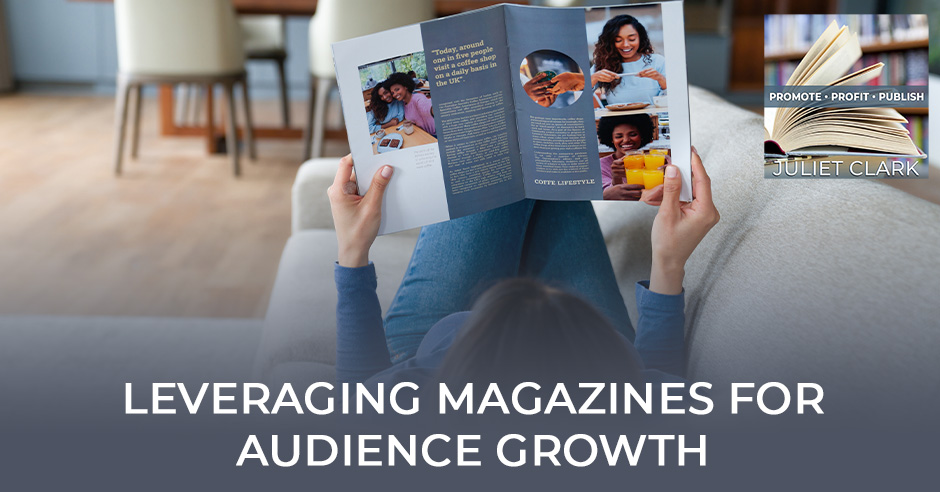
Did you know that magazines can be a way to grow your audience? With the magazine, you can reach audiences you haven’t had access to before. Today, Sheila Kennedy, the Founder of Zebra Ink Magazine, walks us through how authors can leverage magazines to build an audience. She also explains the submission process in her magazine. So what are you waiting for? It’s time for you to try a new avenue to grow your audience, so tune in to this episode today!
—
Watch the episode here
Listen to the podcast here
Leveraging Magazines For Audience Growth
In this episode, I’m pretty excited about our guest. She’s been a previous guest. We’re going to talk about her new venture. Hopefully, some of you will glean some tips about things you could do like what she’s doing to promote herself. Before we get started, I want to remind you to go grab your free copy of Breakthrough Author Magazine. You can find it at BreakthroughAuthorMagazine.com.
We have been doing monthly live training. I wanted to invite you to be a part of it. September 2023’s training with Fran Asaro was amazing. Everybody was blown away. I want to encourage you to go over and register. Every month when you hear about it, you can go to BAMagLiveTraining.com and register. If you’ve been following the show, I say at the beginning that if you want to grab this free training, go over to YouTube and follow the slides instead of just listening.
I hope this is what people do with Audible. I’m someone, that if I find a business book or a training book that is super interesting, I will go over to Audible and buy it. If I think it’s a great resource for future business prospects, I will go buy the softcover or the hardcover so I have it in my library to look back on. Hopefully, you’ll use this training in the same way. I love to see you live. The benefit of live is you get to ask questions.
Our guest for this episode is Sheila Kennedy. She is a champion for storytellers, writers, authors, and speakers. Zebra Ink Magazine is the home where storytellers can share their stories. Sheila celebrates courage, moxie, confidence, and empowerment which is a byproduct of trust and making choices. Every choice you make is another story to tell at a point of connection to another person. There are many stories to unravel and people to influence when you find the courage to share.
A two-time solo author, and co-author of a bestselling memoir of Justice Joseph D. Valentino, he’s retired, and has numerous anthologies, Sheila has been a part of the publishing industry as an author and a publisher since 2013. She not only understands the technical parts of the industry but also provides mentorship and coaching to aspiring authors and storytellers all over the globe.
I have to share. She is the person who sent us Chase Cunningham. If you didn’t see his book gAbrIel, it’s a must-see. He’s a big proponent of STEM for women and also a cybersecurity expert who thinks women are better at cybersecurity than men. I would have to agree with that. We’re better at everything. Sorry, men, but I digress. It is a fictional story but there’s a lot of scientific information in there that he says is real. It’s a great book. Keep reading this interview with Sheila.
—
Sheila, welcome to the show. It’s great to have you back.
Thank you, Juliet. It’s great to be here. I love being on this show.
You have a brand new magazine. The minute I saw it, I flipped through it. I thought it was so cool but I want to talk a little bit about why you did it and what your purpose is. Your magazine is a little bit different than ours. This is a great way to build an audience so I want our readers to see the pros and cons of what we’re doing. In the end, it’s a lot of work.
It is a lot of work. I’m not going to lie.
It’s fun. Tell us about why you did this and how you put it together.
I came from book publishing and I loved doing that. That was fantastic. However, my attention span was growing shorter. Editing books was getting more difficult. I’ve wanted to do this for a few years. I knew that there was a different way to get to an audience. One of the things that was a primary driver for me was knowing that I used to be a newspaper columnist and magazine columnist.
I would be featured each month. Real estate was the first content creation that people were introduced to. This was several years ago when I started the newspaper column. That space became something that had an impact that I had not expected. I saw right away that I could do things like getting published in other publications besides mine. I wasn’t an author or a publisher then. I wasn’t anything. I was just a home stager trying to promote her business.
It grew exponentially to the point where I would be in the grocery store and granted, it was a local newspaper for the county. People would stop me and say, “Sheila, I read your article. I have a question about this.” That started content creation in publication. Throughout the publishing part of my job or career, I’ve always used that as an author platform and things like that.
Let’s make a list of publications that you can get published in because it’s a fantastic way to grow your audience and reach new people that you wouldn’t have had access to before. When I decided to transition out of book publishing, I wanted to have a short-form publication for not just authors but all kinds of entrepreneurs. There are everyday people in there. It’s different. It’s not industry-related necessarily.
It gives them an opportunity to get all of the benefits of being published. They can put it in their press kits and websites. It helps. It’s a link that doesn’t go bad. Sometimes when we have TV interviews or radio interviews, some of those come down after a certain period. This is something that will live in longevity for everybody to use and enjoy for years to come. That’s why I decided to do that.
The other reason is that there are a lot of stories that need to be told. Those stories allow us to do many things. They empower us. They help us to heal, grow, and change. Sometimes they even save our lives. It is one of the best ways I know that somebody else can connect with another person. I wanted to create a platform in which we could celebrate that creativity and courage of putting ourselves out there, whether it was a short story, long story, poem, recipe, or anything like that. That was important to me so I started The Zebra Ink Magazine.
That is so cool because sometimes, that first piece of content, being that small and getting a story out, can give a writer confidence as well. You’d be amazed how many times I hear it from authors. We have a course called I Love Content Creation. An author will write an entire book and then they’ll tell me, “I don’t have any content.” I got 300 pages of content.
That’s so funny because when I do the bestseller campaigns, I take their book and the information right out of it. They’re like, “How did you do that?” It’s like, “I read your book.” One of the things that I love about this is you’re sharing the stories. It’s hard sometimes to become a storyteller in a sense. Can you speak to that a little bit?
A lot of people, especially in the nonfiction world, write memoirs or nonfiction books with the intent to inform or educate. When we tell stories, we’re not doing that. We’re learning around the back way. I can learn through the story. I’m going to remember it better. Our brains are wired to remember stories, not necessarily memorization.
Our brains are wired to remember stories. Share on XThere are six steps to becoming a better writer and I can tell the story of a writer who’s gone through all of those steps. It’s going to be much more meaningful and a way for them to connect than if I just listed the bullet point. I’m a big fan of why storytelling is important. It also allows us to tell about why things are important to us without saying, “This is important because I can hear a story.”
For instance, I was in the ER. I needed to have this life-saving procedure that was horrible to me and I did not want to do it. The doctor is telling me all the reasons why I need to do this and everything else. I was like, “I don’t want this.” He then shared a story about the fact that he had had the procedure done on him a few years prior and he had not had problems with it. This is what he had experienced and he shared all of that with me. After he did that, I decided that I would give it a try.
It’s powerful when we can tell a story about our experiences and the things that are important to us. Also, the things that might not be important to us and why that is. That’s what sticks with people and what makes us memorable. People will remember the story to share with somebody else but they might not remember the title of a book or the name of a podcast. They’re going to remember the story and go search that out. I’m a big fan.
I am too. I used it in parenting. I found when I was parenting that if you tell your child to do something or not do something, there’s that rebellion factor. Instead, share an experience like, “I did that back in the ‘80s and.”
They’re like, “Do you mean it’s not new and it’s been around all this time?”
“I do not want that kind of result.” I’m super sarcastic so everything I do is with humor. I’ll tell it even if it’s bad and they have to laugh at me and think, “You suck as a parent. Why did you tell me that?”
It got that reaction and that’s exactly what I was looking for.
There are other applications for those of you out there besides writing an article. Here’s the other thing. When I started my magazine, I could put out a big chunk of industry-related information and people got overwhelmed but with the magazine, they’re able to take in 500 or 600 words like, “This is what you need to do.” First of all, it’s not overwhelming. Second of all, it’s short. I don’t know if you want to call it ADHD but we all have shiny object syndrome. Whatever it is, if it’s not short and sweet, I’m not engaged.
It’s a lot harder to get people to say yes to reading a 300-page book but it’s super simple for them to say, “I need 3 minutes of your time to read this story.” It’ll be applicable to you. Right or wrong, good or bad, I’m not placing judgment on it. That’s where we are in the world of instant information and a moment’s notice. I wanted to contribute to that form of content as well because that’s where we’re leaning. I’m not saying that people aren’t buying books, listening to podcasts, or things like that. I don’t want to listen to a 30-minute podcast necessarily. I don’t always have the time to do that but I can read a three-minute article. It’s important.
I do listen to a lot of podcasts. Somebody and I were laughing about this. What’s funny about that is I listened to them on one and a half speed. When people talk, it’s like they’re talking in slow-mo because I’m used to listening to my books at a fast speed.
I get it. I don’t even know what the answer to that is.
I don’t either but I have this book I’m reading that’s long. It’s fifteen hours. I’ve got it on two times. If it’s over seven hours, I’m not doing it. It is obnoxious. You and I had different reasons and purposes. I want to point this out for you because if you’re going to do a magazine or produce one for your audience, you have to have your reason and why.
You can tell, “Sheila did this because she gives. I see her on LinkedIn.” Mine is an opportunity to promote power partners. It’s an opportunity for people to get information about our industry and the right information. Being a publisher in the past, people come to us with the most unrealistic expectations. The biggest part of our job is tempering those and making them understand that this is how the industry is and these are the pitfalls and everything.
Mine is not only building my list and client base but also highlighting my power partners, those people whom we go back and forth and send each other business. I have several people in the magazine that I like what they’re doing. I don’t care if they ever send me business or not. We have very different reasons for doing it. When you set yours up, I want to give people an inside scoop about what it takes there. It’s not for the faint of heart. You have a submission process, correct?
I do. With submission, if they choose that level, it’s also a membership for contributors. I have a directory of contributors and there are a couple of different levels. They get to enjoy certain benefits. I have a back end that has all of the marketing resources I have cultivated and things like that about how to grow your platforms, promote things, leverage what you’ve done in this magazine, and all of those kinds of things.
One of the other parts of that is I also get asked quite frequently for speakers, industry experts, or SMEs. I have a directory in which I can point people and say, “I’ve got this person and this person. Here’s their profile. Make sure that you reach out.” Building all of that on top of the magazine has been an adventure. It’s doable and super fun. People can also contribute to the magazine and it’s a short article. It only required one link. No photos or all that kind of thing. That’s free of charge.
I wanted it to be something that was accessible to everyone. If they want to tell another story, great. If they don’t, that’s okay. If they want to have all those other benefits, that’s also an option for them. There’s a ghostwriting option as well. If they don’t want to write their magazine article, then I will do it or I will have somebody do it for me but there’s a fee for that. All of those things are going on at the same time as well as all of the marketing files for each one of the contributors and all of that kind of stuff. There’s a lot to it. My goal is to set them up for success.
It’s the same with ours. Our contributors are power partners but I also like to highlight our new books coming out. If someone purchases a certain level of program, we will publish the program or Author Traffic School. We will highlight what they’re doing in that. Author Traffic School is amazing because people will come with projects that they’ve wanted to do and we’ll work with them one-on-one on that marketing. Every once in a while, we get something unique that somebody wants to do and we think is beneficial for that. Submission. I don’t know about you but for me, sometimes it’s like herding cats. I have entrepreneurs so they get super busy. They forget about the deadline.
It’s different every single issue. In 2023, my goal was to produce 2 to 3. The first one came out in August 2023. In 2024, it will be every month but I don’t have regular contributors. Each issue has, hopefully, twenty new contributors and then that opens up. If somebody doesn’t get it in, then they don’t get in that one or they’ll have to wait until the next one.
It’s not old enough to get all of that. I want to edit everything that comes through and then I want them to approve it. I’ve been published before and they’ve changed pretty much everything. That irritates me. That’s great but if you wanted that written, then you should have written it yourself. That’s not what you asked me to write. It’s important to me that the authors feel empowered to have their material. We make sure that it’s all okay and meets the standard.
That’s why I never do any anthologies because I don’t enjoy herding cats. It’s not one of my favorite things to do and not something I ever wanted to do. I had written a book and I had twelve entrepreneurs that I highlighted. I wrote all the stories but I had those twelve interviews that I needed to translate into the writing of their chapter. That was hard enough because I had to get each one of them to sign off on that. I was like, “Never again.”
The funny thing is when I look at anthologies, I always look at it from the person who’s putting this together and generally making all the money on the project, why aren’t they providing individualized marketing for each person? A lot of times, they’ll collate the material, put it in the book, and copyright it to themselves as if an individual author. They want the author to promote the book in its entirety.
It would go a lot further if you took that individual story, created some marketing around it, and promoted the book at the same time because that allows them to promote themselves and say, “What a wonderful story Sheila wrote. Maybe I’ll check out the other stories in the book.” It would be more complicated. I can think of one particular person who got busted on Amazon because she was doing this in her name. If you’re in this industry, you know who she is. It was more about her than it was about the contributors, which always very much bothers me. You have to make it about them and market them.
The Zebra Ink Magazine is very much like that. I’m not going to lie. It’s a pain in the neck but it’s worth it. I have all of their individual articles linked and put together. I have graphics for that and I send them to them. If that means that somebody’s reading the overall magazine, it’s fantastic. That’s great. The whole point of this was to give these contributors an opportunity to shine. What was important to me was to give them a copy of what they can use it for and all of those kinds of things. It worked fairly well in that respect.

Zebra Ink Magazine: We want to give these authors or contributors an opportunity to shine.
Somebody might be like, “I don’t want to read a whole magazine but I might read an article in the magazine.” Once they get in there, they might go back another day because they flip pages one way or the other way and find another story that is interesting. I’ve been part of things and I had my name or photo on the cover of magazines or things like that. I was part of a collective of people that did something. It does make a difference. There’s a pride thing there. People want to share it. They’re like, “I wrote 1,500 words and did all this stuff.” I’m much more apt to share it if it’s personal. I agree with you.
Here’s the other aspect before we get into production and what these people need. I feel like the magazine is a marketing piece that tells people out there, “I’m a server, not a seller.” I see you on LinkedIn all the time and you are a server. A servant leader, not a seller leader. For any of you thinking about a magazine, it does when it’s not all about you, the entrepreneur.
In my case, it’s power partners. In Sheila’s case, she’s growing new writers. It shows that you’re not in it for the money. I don’t know how many times I hear a client come to me and say, “I talked to so and so. They’re all about the money. I don’t feel like they’re going to serve me.” As much work as it is, this could be a service marketing piece versus a selling marketing piece.
Let’s not underestimate the fact that I do make money on it. It’s very easy to sell. It’s like, “You’re going to put a little bit of effort and money into this and we’re going to create this result for you.” That’s something that’s attracted to people. If they want to do it, awesome. If they don’t, awesome. I’m not going to convince you that this is a good idea. If you don’t see the value in this, that’s okay. You might someday and I’ll still be here. I’m not attached to that. I’m going to keep doing good work. That naturally brings people to the forefront.
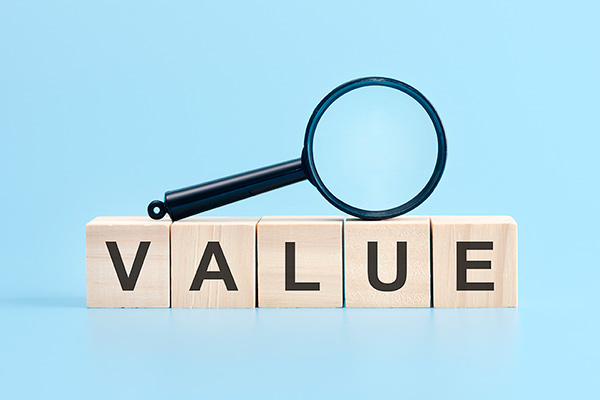
Zebra Ink Magazine: If you don’t see the value in this, I will not convince you that this is a good idea. And that’s okay.
We have all of our articles in-house. We are done with the herding process. Once it’s in-house, I put it together into Google folders and send it off to the formatter. You need a magazine formatter, which I assume you have. I’m assuming you don’t do that yourself because you’re not a graphic designer. If they don’t give me a 300 DPI image that they want with their article, I go and choose. How about you?
Once I read the article, I asked for photos that I thought would be appropriate for the article. That’s going to be different moving forward. It will depend upon what level they decide to come in. They don’t get a photo if they just do an article for the free membership. My desire is to take art because this isn’t just supposed to be writing. It’s supposed to be a celebration of all creativity. I would like to have artists or photographers submit their work. They also will be linked and their byline will be next to their photo. We’ll intersperse that as well. That’s the intention.
If you’re not doing what Sheila does, you need something like Photobucket, Depositphotos, or one of the paid subscriptions. I either use that or covers. Have a personal image of some sort that’s from let’s say a family photo if it’s a family story or a family book. In my third book, there are pictures of my family, the black and white from the olden days. The reason we do it is we want to avoid stealing stuff from the internet. You never know what’s copyrighted. I don’t want to get in trouble for copyrighting stuff.
We do have a Depositphotos subscription. All of the other ones that are inside the magazine were given to me as personal property so that there wasn’t a copyright issue. That’s the same thing with the articles I’ve asked that I don’t own the content rights. That’s something that’s super important to people. They can have it where it’s been published before but that article can’t have rights attached to it to somebody else.
If they are published in your magazine and you have rights or you say that it’s exclusive content, I would not then turn around and say, “Let’s put it in the Brainz Magazine.” That’s not cool. That’s not what I was hoping to ever have to do. That’s part of the submission guidelines. It has to be original work, has to be their work, and can’t have any exclusivity causes over it.
Part of the submission guidelines is it has to be an original work. Share on XIt sounds like you and I both use Depositphotos. For those of you out there thinking, those websites are expensive. Once or twice a year, Depositphotos has a great sale where you can get 100 photos and it’s gone from $100 to $200 with inflation but if you were to buy those individually, they would be a lot more money. Send it off to the formatter. It’s designed. You’ve got the whole package. You’ve got it back. I used Issuu. What do you use?
I do too.
We should do affiliate links here. I didn’t even think of that. You can take that new magazine PDF, upload it, and put notes. We do this with the clickable. When you ask your contributors to put one link, you can put links in there and make them clickable inside of the magazine. Promotion. If you’re someone who’s going to try to do this at home, we go back to our formatter when it’s done. We have them create a LinkedIn banner and produce each one of the magazine pages as an individual JPEG so that we can give them back to our contributors and they can choose to promote the whole magazine or themselves.
Most of them promote themselves, unfortunately. They don’t do a bunch on the magazine but that’s okay too. I’m there. I have them as contributors as an additional promotional tool. We also write a swipe that our people are able to use. I do have to give a shout-out here to Nina Frohriep and Robin Stift. They write their copy and it’s so much better than the copy we have for the magazine. I should probably ask them to write the monthly magazine copy. What do you do on the promotion end for that that might be a little bit different?
We use InDesign to format it. When it goes up, I can do the social of repurposing myself, which is great so I don’t have to bother Jackie with it. That wasn’t a big deal. I normally always do a swipe file and I didn’t with this first issue. There are a lot of reasons why I didn’t. That was something I would never not do again. What I’ve learned about most people is that they don’t know how to promote, what they need to say, how to say it, or where to put it.
Most people don't know how to promote. They don't know what they need to say. Share on XI’m not dissing anybody who knows how to do it but there’s a lot of people that don’t. They don’t know how to tag things and all of that. I am going to create a standard document that will go with them and their individual links, all of the magazine graphics, full-screen links, and all of those kinds of things. When you have twenty people promoting at the same time, the impressions, reads, and all of that follow. I did not take any ads out. I don’t intend to. That’s not my style but if I get to a point where I feel like it’s necessary, I will. I’m not opposed to it but I want to see what it’ll do without it.
I don’t run ads either. For those of you who don’t know what a swipe is because I jumped into it, a swipe is a copy-written email. It’s a little bit different. It’s a suggestion for my people. They don’t have to use any of them. What we use the banner for is we have our LinkedIn newsletter. Either the first of the month or right before the first of the month is the release.
We’ll put it in our newsletter with the click and it has that written copy there. We’ll tag a few people on it as well. I’m not big on ads. I’m not on Facebook. I’m only on LinkedIn. I don’t know about the rest of the social media. It’s a time suck. Not only that but it’s gotten toxic. I got off Twitter in 2016. I had a huge audience too. In 2020, I got off Facebook and Instagram.
There are a couple of things. I’m on all the platforms, including TikTok and Pinterest. Pinterest is something that it is its own search engine. It’s a lot like the YouTube days when YouTube was its own search engine, had its own algorithms, and things like that. Pinterest is following in that. There’s a lot of people making a lot of money on Pinterest. We have a presence in all of those places as The Zebra Ink.
When I send out a swipe file, I send out social media posts for all of those different places so if the author is on those places, we can tag them or they can tag us and they know that we’re there. I don’t do things like Snapchat or WhatsApp. About all the other ones, I am a part of them. I do think it’s made a difference. In the stats, it doesn’t tell you where exactly all of the views come from, which would be great if I could see where that was but I could go to every platform, look at those insights, and see but so far, it’s a pretty well-rounded approach ever. I tried it anyway.
Is WhatsApp a place to post things? All I get are marriage proposals from foreign people.
I have no idea. The last time I used WhatsApp was when I had a client that lived in Dubai. We use that to communicate with each other but I know that it’s a thing. People use it all the time but it’s not something I do. I don’t use Threads. What’s that phone call or audio one? I can’t remember that one.
Clubhouse.
I don’t use those either. It also helps the authors. They’re all on different platforms so that’s okay. They can have that attachment and that helps when we’re doing that. Coming soon, I’ll also have a top pick of the week, where people from the directory will be shared not necessarily their article but their platform so it’ll be something opposite, which is a fun way to be able to promote people and get them out into the world.
Most of the people that are in the magazine have a story to tell but it’s usually about a product, a service, an event, or something like that that they want to share about. I don’t want to have ads in the magazine. Telling the story and then linking them to a marketplace in the back of the magazine is my way of saying, “There are books, podcasts, livestreams, products, and all of those things that help.”
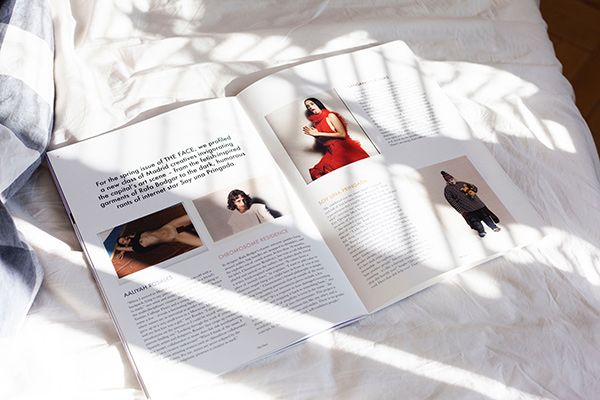
Zebra Ink Magazine: Most people in the magazine have a story to tell, but it’s usually about a product, service, or event.
We use our back cover much the same. It’s first come first serve for our contributors. If somebody has an event coming up, the short-sightedness that I had to lay out in new submission guidelines is they’ll come to me in February and say, “I have an event in March.” That should have been the back cover of January for that to come out in March, even a month ahead of time on that.
For those of you who are reading, you’re going to see a lot more of Sheila. She’s going to be a 2024 contributor to Breakthrough Author Magazine. We didn’t have anybody who was talking about storytelling. It is an art. We talked about that before we jumped on here. Some people do their storytelling with a lot of TMI. The point is to be vulnerable, not just blab.
Don’t have a barf draft. That’s what Kris, our editor, calls it. It’s meant to be vulnerable, not a barf draft. Sheila’s going to ferret out those problems for us and talk a little bit about how we can all do it better. Where can we find you and our magazine if they’re interested in contributing and they want to grab your next issue?
The best place is www.TheZebraInk.com. There’s a page there for the magazine. You can click to subscribe. You can see on the Join page, there are all of the options for submission. That’s probably the best way to do that.
There are zebras behind you. Are you obsessed with zebras?
The short story of that is when I was going through a hard time and I didn’t think I had any choices, I was reminded by a friend that I always have the option to choose my reaction to any situation. A couple of months after that hard time, I had chosen a different way to conduct myself. I slayed the giant. I was in that rock and a hard place situation.
We always have the option to choose our reaction to any situation. Share on XWhen I read Shel Silverstein’s poem called The Thing About Zebras, he had the zebra question. He asked the zebra if it was black with white stripes or white with black stripes. The zebra answered him with questions like, “Are you neat with sloppy ways or sloppy with neat ways? Are you good with bad habits or bad with good habits?” It went on and on. He decided never to ask the zebra a question again.
What I decided to do was take the zebra print and use that as a visual reminder to remind me that I have the power to choose my reaction. That was a very empowering moment for me. I wanted to spend the rest of my life making sure that everybody else knew they also had the same power to do that. Ever since then, the zebra has been my mascot. I use that everywhere so that I remind people that they have the power to choose.
I’m so glad that came up and I had to ask. I’m obsessed with wolves. I took a painting. I’m the wolf girl because they’re so hard to paint. Readers, thank you so much for reading. Thank you, Sheila. I hope you guys go over and grab her magazine when you grab ours. I’m excited to have you on board for 2024, Sheila.
Thank you so much, Juliet. I appreciate it. It’s been fun.
Important Links
- BreakthroughAuthorMagazine.com
- BAMagLiveTraining.com
- YouTube – Superbrand Publishing
- Zebra Ink Magazine
- Chase Cunningham – Past Episode
- gAbrIel
- I Love Content Creation
- Author Traffic School
- Photobucket
- Depositphotos
- Issuu
- TikTok – @TheZebraInk
- Pinterest – @TheZebraInk
- Join
About Sheila Kennedy
 Sheila Kennedy is a champion for storytellers, writers, authors and speakers. Zebra Ink Magazine is currently the home where storytellers can share their stories. Sheila celebrates courage, moxie, confidence and empowerment that is a by-product of trust and making choices. Every choice you make is another story to tell and a point of connection to another person. There are so many stories to unravel and people to influence when you find the courage to share. A two-time solo author, co-author of best-selling memoir of Justice Joseph D. Valentino (RET), and numerous anthologies, Sheila has been a part of the publishing industry as an author or publisher since 2013. She not only understands the technical parts of the industry, but also provides mentorship and coaching to aspiring authors and storytellers all over the globe.
Sheila Kennedy is a champion for storytellers, writers, authors and speakers. Zebra Ink Magazine is currently the home where storytellers can share their stories. Sheila celebrates courage, moxie, confidence and empowerment that is a by-product of trust and making choices. Every choice you make is another story to tell and a point of connection to another person. There are so many stories to unravel and people to influence when you find the courage to share. A two-time solo author, co-author of best-selling memoir of Justice Joseph D. Valentino (RET), and numerous anthologies, Sheila has been a part of the publishing industry as an author or publisher since 2013. She not only understands the technical parts of the industry, but also provides mentorship and coaching to aspiring authors and storytellers all over the globe.
Love the show? Subscribe, rate, review, and share!
Join the Promote, Profit, Publish Community today:
- superbrandpublishing.com
- Promote, Profit, Publish on YouTube
- Follow Juliet on LinkedIn
- Take the Quiz!

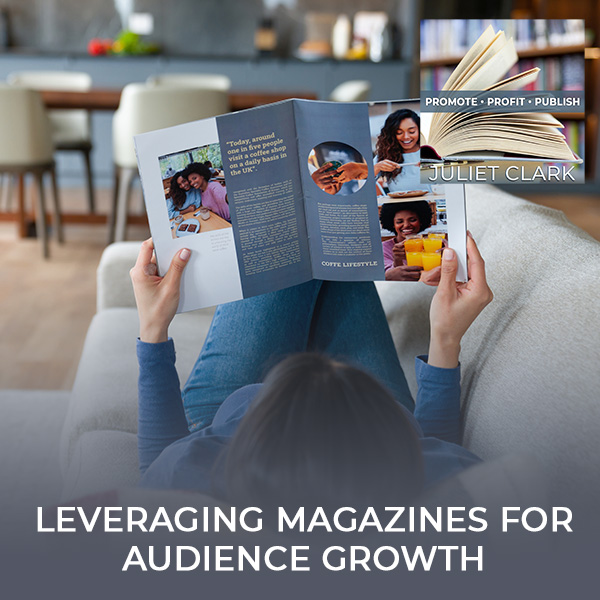


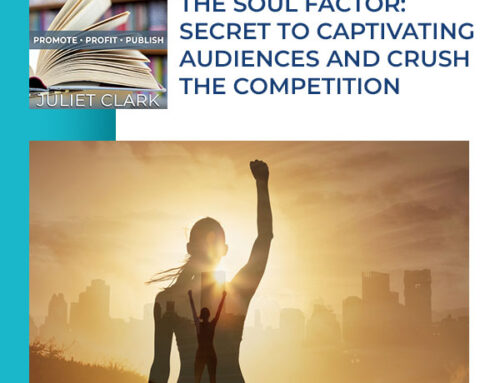
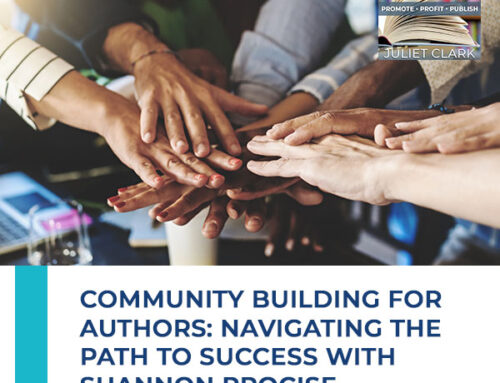
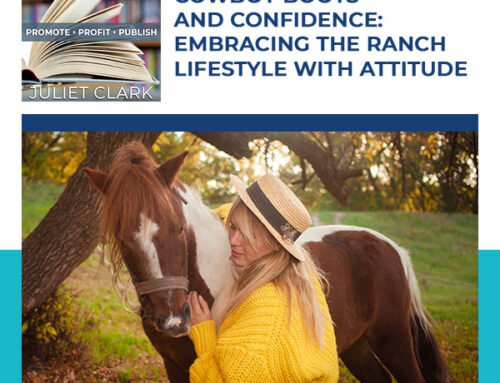


Leave A Comment